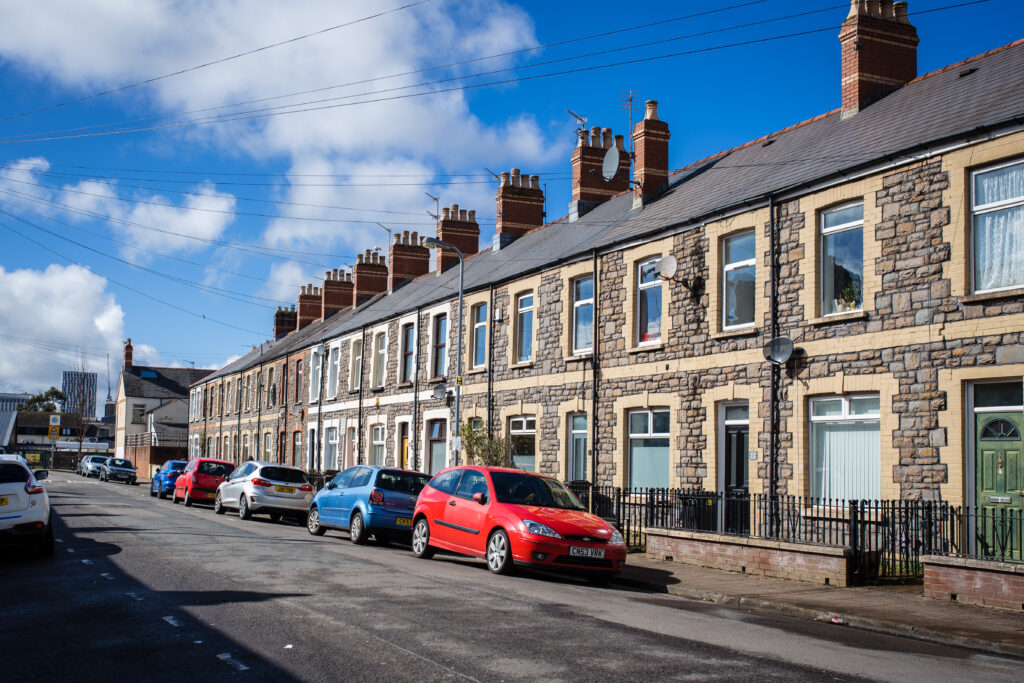Mike Hedges AM argues that enterprise zones need to be seen as one arm of the government’s economic strategy and not as the only way of developing the Welsh economy.
In the early 1980s enterprise zones were created, by the then Conservative government at Westminster, in order to stimulate the economy. Wales had three such zones, Milford, Delyn and the largest in Britain in Swansea. Initially retail was excluded from enterprise zones but in many, including Swansea, it became a significant part of the zone. In Swansea the term enterprise zone is used as an alternative name for an out of town shopping area.
A report from the think tank Centre for Cities and the not for profit organisation The Work Foundation said the following:
“Evidence from previous enterprise zones suggests that up to 80 per cent of the jobs they create are taken from other places; that Enterprise Zones do very little to promote lasting economic prosperity”
Enterprise zones were also tried in the USA , especially in California where according to a report published by the Public Policy Institute of California in 2009 “ that it had failed to achieve its key objective of creating jobs”.
The consistently negative account of the impact of Enterprise Zones in the 1980s took them off the agenda for almost 30 years. Now they have returned and the challenge must be to learn lessons from the 1980s and to not repeat the mistakes made when enterprise zones were created the first time.
The Minister for Economy, Science and Transport said at a meeting of the Finance Committee, when they undertook an investigation into enterprise zones “I think we have learnt some of the lessons from the previous engagement. You cannot have business rate relief if the company is being displaced. We learnt that lesson straight away. Enhanced capital allowances are only for new investment; you cannot have it if you are already in there. It is quite important that that those two safeguards are already there.”
The other major difference is that the new enterprise zones are sector specific.
Anglesey- Energy
Cardiff- Financial and Professional Services
Deeside and Ebbw Vale- Advanced Manufacturing
Havens- Energy and Environment
St Athan- Aerospace
Snowdonia- Energy, Environment and ICT
Whilst it is difficult to criticize any of these zones and the sectors they are focussing on, especially as in most cases they are building on local strengths, I am sure I am not the only person surprised that one of Wales growth sectors, life sciences, is missing completely and that ICT exists only as the third part of the Snowdonia zone.
The other thing to remember is that Enterprise zones are not the only Government regional development policy. In my own constituency of Swansea East there is a major development on the waterfront at SA1. Here we have a development that has a commercial and residential mix and a forecast of nearly 3000 new jobs, approximately 2,000 new apartments and houses and a major development by the University of Wales Trinity Saint David on the site.
It was reported in January 2015 that 2,065 jobs have been created in the seven zones. Figures released by the Welsh Government reveal that from inception to March 2014, 779 jobs were created either through direct financial support or through wider Welsh Government assistance in the Deeside Enterprise Zone, with a further 2,484 safeguarded.
In the Central Cardiff Enterprise Zone, 465 jobs have been created and 51 safeguarded. In the Anglesey zone, 435 jobs have been created and a further 356 safeguarded.
Some 208 positions were created in the Haven Waterway enterprise zone in Pembrokeshire, and 29 safeguarded. The Ebbw Vale zone saw the creation of 172 jobs and 61 safeguarded. And 94 jobs have been created in the St Athan zone, and six jobs created in Snowdonia, with two safeguarded.
Whilst these figures, especially at St Athan and Snowdonia, will be disappointing to those who see enterprise zones as a quick fix, the easy option is to widen the sectors that are being supported and thus show an increase in employment in each zone. In my view that would be a serious mistake, repeating the 1980s error that led to retail being added to enterprise zones in order to boost employment figures. The current sectors chosen are those that include a high number of highly paid jobs and this has the ability to help increase the Welsh GVA. We need to be patient and produce sustainable employment rather than bringing in another LG at substantial cost especially opportunity cost.
Enterprise zones need to be seen as one arm of the government’s economic strategy and not as the only way of developing the Welsh economy. What is needed to increase Welsh GVA is to increase employment in industries such as ICT, Professional services and life sciences. Whilst enterprise zones are one way of helping to develop the economy, working closely with universities and commercially exploiting their research is another. There is not one quick fix for the Welsh economy, if that was true then every other Country in the world would be doing it.






My main gripe about enterprise zones is that there is little or no enterprise going on in most of them. Abertawe’s Enterprise Zone is a classic example of this but no worse than others that can be cited. They are comprised of modular ‘business/factory units’ often unsuitable for many types of business until modifications are made and are expensive to rent. They are also ‘social deserts’ in that the only popular places to eat drink and mix with other businesses is out of the zone. The only thing catered for is ample parking.
The failed Techniums are another example of total misunderstanding of how business and so-called enterprise is done in the modern era.
I am not against ‘zoning’ per se but successful zones should be clustered organically around an ‘industry driver’, a state institution or a university campus. They should not be ‘planned’ they should be spotted at an early stage and then helped to expand by re-zoning areas around them (difficult I know). Nor should they be exclusively ‘sector specific’ as industries require many different sectors within a supply chain to be nearby not just be located in a forest of similar competitors.
Similar to misunderstanding by local and national government of how enterprises grow is the total misunderstanding of the well springs and sources of ‘innovation’ but that is another whole can of worms.
I thought for a minute I’d misread this – “one arm of the government’s economic strategy.”
A strategy requires a policy to be implemented; strategy then fulfills such a policy.
Er…what policy and what strategy?
@chris Jones
I think the main problem with “Abertawe’s Enterprise Zone” is that nobody knows where it is 😉
The Pembroke Dock Technium – a jewel in the crown of the Haven Enterprise zone – peaked at 7% occupancy and that included commercial tenants like a dentist and a law firm !
These zones seem to specialise in funnelling public money from Wales/Westminster/Europe into the pockets of (usually) out of zone consultants, marketeers and construction firms whilst providing PR opportunities for politicians. Sustainability of any employment created seems dubious. A frequent ploy seems to be failing businesses claiming that without public funding they will shed staff. A handout keeps them spinning along for a bit longer and generates an interim ‘jobs saved’ headline.
Government should stick to it’s knitting and restrict spending to education, health and infrastructure.
Mike lives in his own Labour bubble.
Swansea is a mess. He talks of SA1 as some sort of success. It’s prime development land & any fool could develop it. It’s hardly worth a trip or a walk down there. Contrast it with Cardiff’s Bay area.
Swansea city centre continues its downward spiral, with the retail zone more or less confined to Oxford Street and the Quadrant Centre, opened in 1980. No significant developments since.
Labour’s projects were a disaster for the city. The so-called “Café Quarter” in Wind Street became a drinking zone. The grandly named “Metro”, in reality a very expensive bendy bus costing £320,000 each, seating only 37, with two staff one each one connecting two of the city’s hospitals. The buses are now being discontinued.
The city’s road system is a nightmare, including the killer Kingsway. The Council have left it to the bus companies to sort out the chaos. High Street Station has two bus stops 75 yards apart for buses to the city centre, passengers don’t know which to stand at, and one doesn’t even have a shelter. Oysterrmouth Road has been turned into five lane race track, a nightmare for pedestrians to cross, especially when it’s raining. They filled in a perfectly good subway to create the grand-sounding “Boulevard” and cut down a stand of lovely mature trees at the bottom of The Strand, now replaced with puny saplings which have no space to grow on the small central reservation. One could carry on indefinitely about Swansea’s woes.
The city has a beautiful bay, and is on one of the best coastal sites in Britain. If they could ruin it they would ~ they placed the remains of a girder bridge as a kind of monument opposite Singleton Park, leaving the bridge supports in a dilapidated state for years covered with scaffolding to this day.
Now they’re selling the County Hall (which cost £60m?) & goodness knows how the city’s services will be run as a consequence, with reports that many staff have to “hot desk” at the Guildhall.
All credit to Swansea City for it’s success in the Premier League. Thankfully the Club isn’t run by the Council.
Regretfully, & based on experience, I don’t associate Swansea with “enterprise”.
I must say that I don’t think that Swansea’s enterprise zones work well – Many are well out-of-town, shabby, and isolated from society. The main roads leading to them are also designed to lead people right past them without stopping. There are some good businesses tucked away, largely out of sight, but they’re not usually inviting places to visit, unlike city centre shops. The fry-up cafes nearby often do well though! Perhaps these businesses should have been given space in and around the city centre, with housing, surgeries, and schools being in the current enterprise zones.
Some facts
There is only one enterprise zone in Swansea
The football and rugby stadium were built by the council
The bendy buses were bought and run by the First group who are the local bus company
SA1 has been built on non council and non government funding
Opinion
I believe the industrial and maritime museum along with the national pool are successes
I believe almost everyone in Swansea knows where the enterprise zone is
Mike
Swansea’s city centre road scheme (costing £10m EU funding & devised by the Council) was constructed for the Metro (bendy-bus) system. Which came first, the chicken or the egg, the buses or the roads? Did not the Council encourage or collaborate with First Cymru on the purchase these vehicles as a vanity project? I remember councillors taking rides on them prior to the scheme starti
It’s the planning element of SA1 that I find disappointing. The local authority could have made far better use of the land. For example, how many call centres are situated there?
Sadly, I well remember my disappointment when I first visited the Maritime Museum, the wow factor is missing. What are the visitor numbers? How many national & international competitions have been held at the “Wales National Pool”? Why so few?
For the record, there are currently no Enterprise Zones in Swansea.
http://business.wales.gov.uk/enterprisezones/zones
For the record there is a 1980s enterprise zone in the east of Swansea which is still generally refered to as the enterprise zone